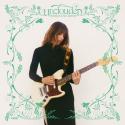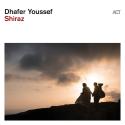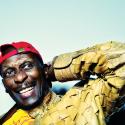Seattle-born Allison Neale’s alto saxophone sound is instantly appealing. Her playing has the light wispy, airy quality from the "cool", "West Coast" school of Paul Desmond. One day last year, she spent just six hours (10am-5pm minus an hour for lunch, I gather) with three other top-flight jazz musicians at Angel Studios in Islington – shortly before it closed, in fact. The result, Quietly There (Ubuntu Music) is a completely delightful album.
Neale’s totally assured sense of how to convey melodies finds the perfect complement in New York guitarist Peter Bernstein. And if there are echoes here of the partnership which Desmond had with that understated guitar genius Jim Hall, then it is certainly no accident: Bernstein was a student of Jim Hall’s. In a recent interview he recalled what it was like to be in a class tutored and led by Hall. He recalled the quiet master’s supportive musical presence, and what he has called, with deep affection, Hall’s "will to make everyone sound better and to lift the music".
That generous spirit, that attitude has been handed down and permeates this recording. There is no hint of competition, only civilised dialogue, and in place of the preening people can associate with jazz, here are two expressive instrumental voices finding inventive ways to intertwine and to spark off each other. The manner in which Bernstein gently sets the scene for Neale’s first entries in the tunes “Lollipops and Roses” or “I’m Glad There Was You” with just a few feather-light, exquisitely placed and voiced chords is masterful.
The repertoire choices all work well, with a good mix of the laid-back and the more urgent. There is (as far as I can see) just one tune here that Desmond and Hall actually recorded together, “2 degrees East, 3 Degrees West” by Modern Jazz Quartet pianist John Lewis, but the arrangement here cleverly swaps the roles of the two main protagonists. There are recollections of early-fifties Stan Getz in two tunes that were staples of his: Horace Silver’s fleet and energetic “Split Kick”, with Bernstein’s voice deftly shadowing every darting gesture by Neale in the tune, and a sublime “I’m Glad There Was You”.
The seasoned bass-and-drums pairing of Dave Green and Steve Brown is ideal too. The variety that Brown is able to give to the swing backings of “Spring is Here”, and the way a shuffle feel is first hinted at and then introduced towards the end of the tune is an absolute masterclass. And both the touch and the time of Green – whether playing sparsely or in fast lines, or switching between the two, as on “You Do Something to Me” – are consistently magical.
Quietly There sounds so great throughout, it works perfectly well as the sort of instrumental album one can "have on” in the background, to enliven life when concentration needs to be elsewhere. But the more carefully one listens, the more deeply this very fine album beckons one in to its subtleties and its joys.














Add comment